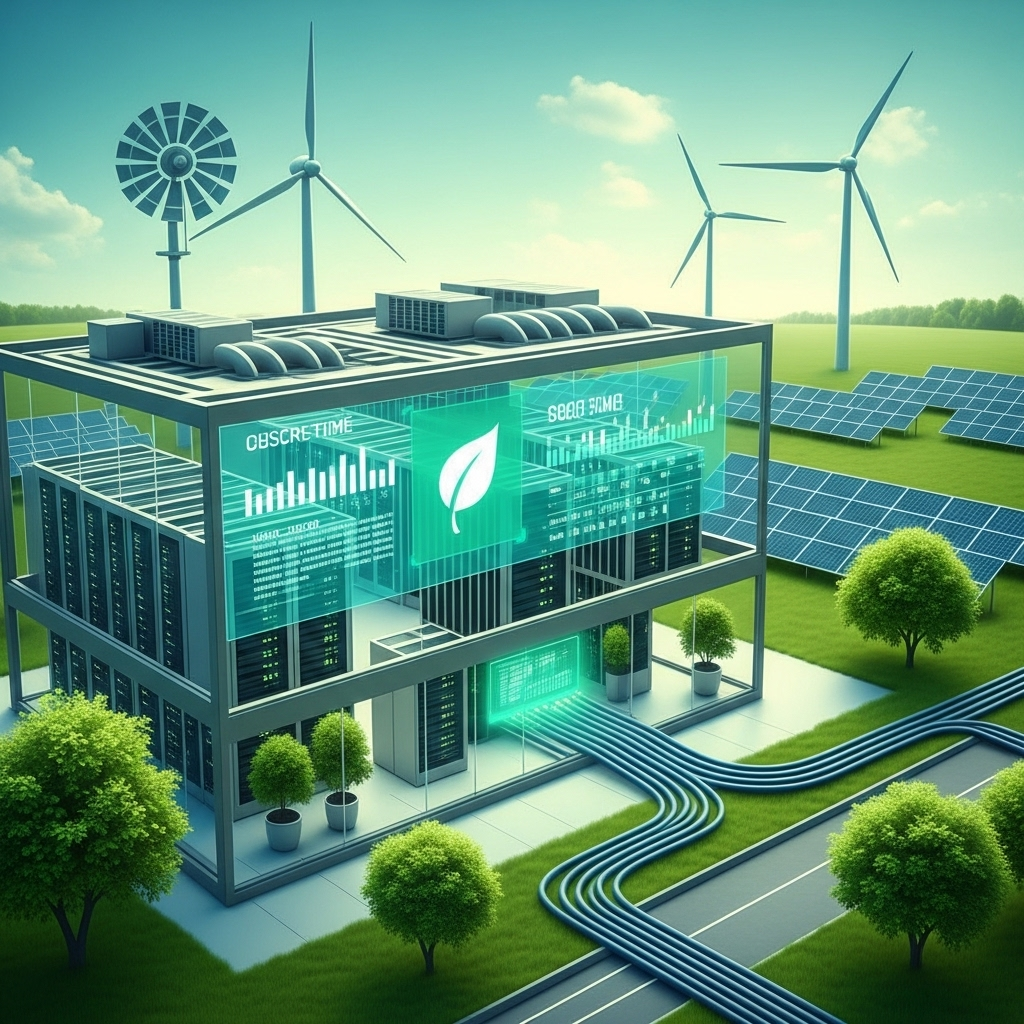The gaming industry’s environmental impact has become an increasingly critical concern as the sector’s energy consumption rivals that of entire countries. With gaming responsible for approximately 2.4% of global electricity consumption and growing, the push toward sustainable development practices has evolved from optional corporate responsibility to essential business strategy.
The Environmental Cost of Digital Entertainment
The carbon footprint of gaming extends far beyond the electricity consumed by devices during play. Manufacturing gaming hardware requires rare earth minerals whose extraction devastates ecosystems. A single gaming console’s production generates approximately 85 kilograms of CO2, equivalent to driving 350 miles. When multiplied by hundreds of millions of devices, the environmental impact becomes staggering.
Data centers powering cloud gaming and multiplayer services consume enormous amounts of energy. A typical gaming data center requires 50-100 megawatts of power, enough to supply 40,000 homes. Cooling systems necessary to prevent hardware overheating can account for 40% of a data center’s energy consumption. As cloud gaming proliferates, these centralized computing resources become critical environmental considerations.
Digital distribution, while eliminating physical media, carries its own environmental costs. Downloading a 100GB game generates approximately 0.1 kg of CO2 through network infrastructure energy consumption. With billions of game downloads annually and increasing file sizes, the cumulative impact rivals that of physical distribution. Re-downloading games multiple times, common with limited storage devices, multiplies this impact.
Sustainable Development Practices
Game studios are implementing comprehensive sustainability strategies that span the entire development lifecycle. Remote work, accelerated by the pandemic, has permanently reduced commuting emissions for many developers. Studios report 30-40% reductions in carbon footprints through eliminated commutes and reduced office energy consumption. However, this shifts energy consumption to residential settings, requiring holistic measurement approaches.
Code optimization has emerged as an unexpected sustainability tool. Efficient algorithms reduce processing requirements, lowering energy consumption during gameplay. A 10% improvement in code efficiency can translate to millions of kilowatt-hours saved across a popular game’s player base. Modern development practices emphasize performance optimization not just for player experience but for environmental impact.
Asset optimization strategies significantly reduce file sizes and processing requirements. Advanced compression techniques, procedural generation, and efficient texture formats minimize storage and bandwidth requirements. Games using these techniques can achieve 50-60% file size reductions without compromising visual quality, directly reducing distribution and storage energy consumption.
Hardware Efficiency Evolution
Console manufacturers have made significant strides in energy efficiency, with each generation achieving better performance-per-watt ratios. The PlayStation 5 and Xbox Series X, despite superior performance, consume similar or less power than their predecessors through architectural improvements. Advanced power management enables consoles to dynamically adjust consumption based on workload, saving energy during less demanding scenes.
Graphics card manufacturers face unique challenges balancing performance demands with environmental concerns. While modern GPUs are more efficient per computation, their absolute power consumption has increased. High-end graphics cards now consume 400+ watts, raising questions about sustainability in pursuit of visual fidelity. The industry is exploring alternative metrics beyond raw performance to include efficiency considerations.
The rapid upgrade cycle in PC gaming creates substantial electronic waste. Enthusiast gamers upgrading components every 2-3 years generate significant environmental impact through manufacturing and disposal. Extended hardware support through driver updates and optimization can reduce upgrade frequency, but market pressures and planned obsolescence work against sustainability efforts.
Cloud Gaming’s Environmental Paradox
Cloud gaming presents a complex environmental equation with both benefits and drawbacks. Centralized computing resources can be more efficiently cooled and powered than distributed gaming devices. Data centers can locate near renewable energy sources and operate at higher utilization rates than personal gaming hardware. These factors suggest potential environmental benefits from cloud gaming adoption.
However, the network infrastructure required for cloud gaming introduces substantial energy consumption. Streaming 4K gameplay at 60fps requires consistent 35-50 Mbps bandwidth, with network equipment consuming energy across the entire path from data center to player. The always-on nature of cloud gaming infrastructure means servers consume power even during low utilization periods.
The geographic distribution of data centers affects cloud gaming’s environmental impact. Locating servers near renewable energy sources reduces carbon intensity, but latency requirements often dictate placement near population centers powered by mixed energy grids. Edge computing solutions that process games closer to players could reduce network energy consumption but require more distributed infrastructure.
Green Energy Integration
Gaming companies increasingly power operations with renewable energy. Microsoft has committed to carbon negativity by 2030, with Xbox manufacturing and operations transitioning to renewable power. Sony aims for 100% renewable energy across all facilities by 2040. These commitments require substantial infrastructure investments but demonstrate industry recognition of environmental responsibilities.
On-site renewable generation at development studios and data centers provides direct control over energy sources. Solar installations on studio rooftops, while insufficient for total power needs, demonstrate commitment and provide partial energy independence. Some facilities integrate battery storage to maximize renewable utilization and provide backup power during outages.
Power purchase agreements (PPAs) enable gaming companies to support renewable energy development without direct infrastructure investment. Long-term contracts for wind or solar power provide price stability while reducing carbon footprints. These agreements often finance new renewable projects, multiplying environmental benefits beyond direct consumption.
Sustainable Game Design Philosophy
Games themselves increasingly incorporate environmental themes and mechanics that raise awareness about sustainability. Titles like Beyond Blue and Alba: A Wildlife Adventure directly address environmental issues through gameplay. This “green gaming” content educates players while demonstrating developer commitment to environmental causes.
Procedural generation reduces both development resources and game file sizes. Instead of storing vast amounts of pre-created content, algorithms generate worlds dynamically. This approach, used effectively in games like No Man’s Sky, can reduce storage requirements by 90% or more while providing infinite content variety.
Live service games that evolve rather than requiring sequels reduce environmental impact from new game development and distribution. Regular updates to existing games eliminate the need for players to download entirely new titles. However, constant updates and patches create their own bandwidth consumption, requiring careful balance.
Electronic Waste Management
The gaming industry generates millions of tons of electronic waste annually through discarded consoles, peripherals, and accessories. Proper recycling recovers valuable materials while preventing environmental contamination. However, only 20% of gaming e-waste is properly recycled, with the remainder entering landfills or informal recycling systems with severe environmental consequences.
Manufacturers are implementing take-back programs and designing products for easier recycling. Modular designs allow component replacement rather than entire device disposal. Materials selection considers end-of-life recycling, avoiding composites that complicate separation. These design choices may increase initial costs but reduce long-term environmental impact.
The right-to-repair movement advocates for repairable gaming hardware that extends device lifespans. Manufacturer resistance citing security and intellectual property concerns conflicts with sustainability goals. Legislative pressure in various jurisdictions is forcing companies to provide repair parts and documentation, potentially reducing gaming’s e-waste generation.
Carbon Offset Programs and Verification
Many gaming companies purchase carbon offsets to neutralize their environmental impact. These programs fund reforestation, renewable energy, and carbon capture projects. However, offset quality varies significantly, with some providing minimal environmental benefit. Verification through standards like Gold Standard or Verra ensures offset legitimacy.
Direct carbon removal technologies offer more permanent solutions than traditional offsets. Some gaming companies invest in direct air capture and storage technologies that physically remove CO2 from the atmosphere. While currently expensive, these technologies provide verifiable, permanent carbon removal that could enable truly carbon-negative gaming.
Blockchain-based carbon credit systems promise transparent, verifiable offset markets. Gaming companies could integrate carbon offsetting directly into game purchases, with players able to track the environmental impact of their gaming. However, the energy consumption of blockchain systems themselves raises questions about net environmental benefit.
Community and Player Engagement
Players increasingly consider environmental impact in purchasing decisions. Surveys indicate 73% of gamers prefer environmentally responsible companies, though price and quality remain primary factors. This consumer pressure drives corporate environmental commitments, though “greenwashing” without substantive action remains common.
Gaming communities organize environmental initiatives from tree-planting campaigns to e-waste collection drives. Speedrunning marathons like Games Done Quick incorporate environmental fundraising. These grassroots efforts demonstrate gaming communities’ environmental concern and provide models for industry engagement.
Educational initiatives within games can influence player behavior beyond gaming. Energy-saving prompts, carbon footprint calculators, and sustainability tips integrated into games raise awareness. Some games reward players for real-world environmental actions, bridging virtual and physical environmental engagement.
Regulatory Landscape and Compliance
Environmental regulations increasingly impact gaming operations. The European Union’s Green Deal includes provisions affecting gaming hardware efficiency and recycling. California’s energy efficiency standards for gaming devices have influenced global product design. These regulations create compliance costs but drive innovation in sustainable design.
Carbon pricing mechanisms in various jurisdictions add direct costs to gaming’s environmental impact. Data centers in regions with carbon taxes face higher operational costs, influencing location decisions. As carbon pricing expands globally, environmental considerations will increasingly affect gaming economics.
Extended producer responsibility (EPR) laws make manufacturers responsible for end-of-life product management. Gaming companies must fund collection and recycling programs in EPR jurisdictions. These requirements internalize environmental costs previously borne by society, incentivizing sustainable design.
Future Sustainability Trajectories
Emerging technologies promise more sustainable gaming futures. Quantum computing could revolutionize game processing efficiency, though current quantum computers consume enormous energy. Neuromorphic chips mimicking brain architecture could provide massive efficiency improvements for AI-driven game elements.
The metaverse concept raises questions about virtual consumption replacing physical consumption. If gaming and virtual experiences reduce physical travel and consumption, net environmental benefits could be substantial. However, the computing infrastructure required for persistent virtual worlds could offset these benefits.
Circular economy principles are beginning to influence gaming hardware design. Products designed for disassembly, repair, and material recovery could dramatically reduce gaming’s environmental impact. Subscription models for hardware, where manufacturers retain ownership and responsibility for devices, align economic incentives with sustainability goals.





